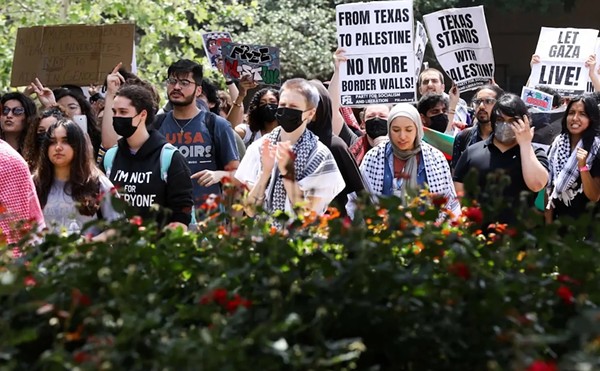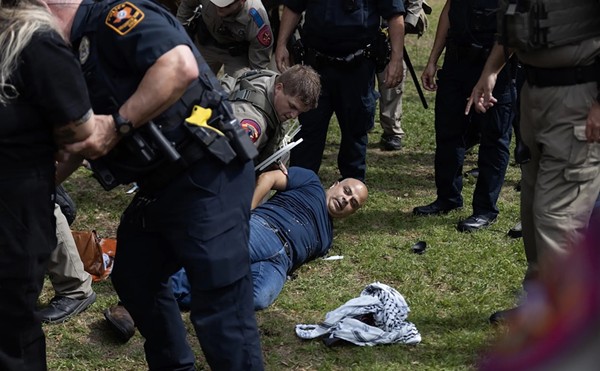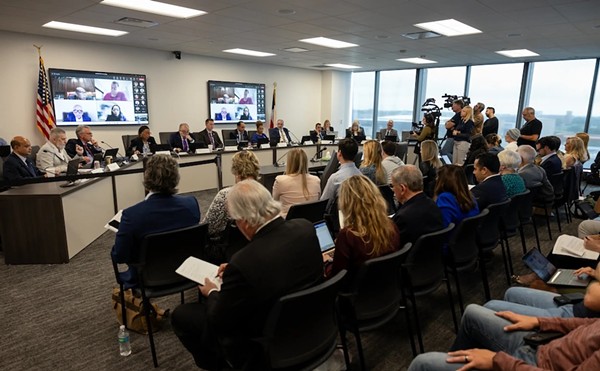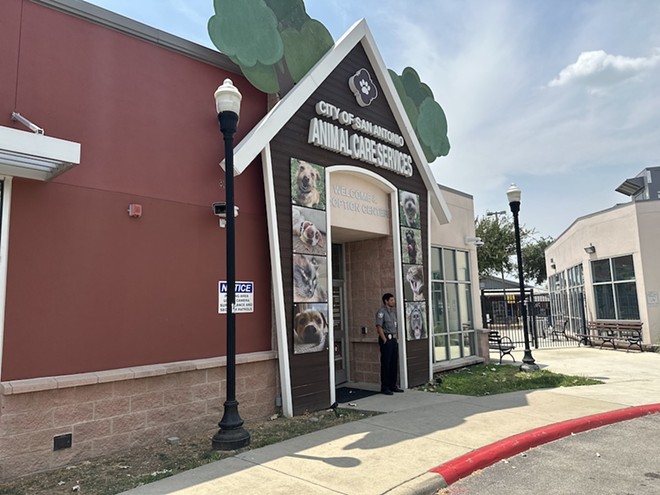
Editor's note: This story was updated to correct the background of animal advocate Vanessa Acosta.
Last week, a Bexar County grand jury indicted Christian Alexander Moreno and his wife Abilene Schnieder on charges of dangerous dog attack, a second-degree felony, and injury to the elderly causing bodily injury.
The couple, now facing up to 22 years in prison, owned the pit bulls that mauled 81-year-old Air Force veteran Ramon Najera to death on San Antonio's West Side in February.
The attack stunned the nation and launched an overdue community conversation about San Antonio's stray animal problem. Concerned citizens, including resident Vanessa Acosta, have attended city council's public comment sessions in recent weeks, demanding more money go to Animal Care Services (ACS) in the city's upcoming budget cycle.
"The laws that we do have about dangerous dogs need to be enforced," Acosta angrily told council during an early August session. "Why aren't they being enforced?"
In the wake of Najera's death and a separate incident last week in which a man was left with severe injuries after being attacked by a pack of dogs on the far West Side, ACS Director Shannon Sims went in front of City Council Aug. 17 to justify the department's request for a 26% funding increase.
However, animal advocates argue that San Antonio needs to look at a more drastic increase in ACS's budget, asserting that the city has allowed its stray-animal problem to fester for too long.
Frontline fighters
Among the most vocal council members at last week's ACS budget meeting was District 2's Jalen McKee-Rodriguez, who represents San Antonio's economically disadvantaged East Side. During his remarks, he suggested that beyond increasing spending, the city should rethink where it allocates its resources.
"As the only representative for the East Side, I have to express plainly that we have nothing," McKee-Rodriguez told Sims. "We do not have affordable vet clinics, we don't have access to spay and neuter, we don't have affordable access to other care for pets, and we really sparingly have any kind of ACS presence. So, there is a need, and I hope that my colleagues can empathize with that need and support us in efforts to gain a facility in the district."
Worse, Sims told council that ACS only has the current capacity to respond to 44% of the calls it receives, with an average response time of an astonishing 30 hours.
"Digging into this data, if we had this number in 2015 or 2016, before it exploded into an incident that everybody is talking about, maybe we could have made those course corrections," a clearly annoyed Mayor Ron Nirenberg told Sims.
"I guess what I'm saying to you, Shannon, and your team, is regardless of what the bureaucracy does — and the bureaucracy has its own inertia — we move forward day by day, if there is something going on that you need to stop a problem before it happens, and this goes for every department, you gotta bring it to us because as our delegation said earlier today, if the money's not in there, then nothing happens."
ACS's evident dysfunction has led citizens like Acosta, a 25-year-old military veteran and originally from Las Vegas, to function as a pro-bono animal care officer when she's not working her day job as a dental hygienist.
"District 2 is bad," Acosta told the Current of the area in which she lives. "We have no help. Cops don't help in District 2, ACS doesn't help. No one takes District 2 seriously."
The final straw for Acosta came when neither ACS nor SAPD would respond to multiple calls she made this year about a neighbor she said has a criminal record for animal abuse yet is keeping more than the city-allowed number of five dogs in his house.
Indeed, District 2 had a substantial number of repeat 311 calls about offenders between February and May of this year, according to a separate presentation given to city council by 311 Customer Service Director Paula Stallcup.
"ACS needs to have an animal cruelty and backyard cruelty team to really work together to crack down on these homes that have over the five-animal limit, because we do have a law saying that each home's limit is five dogs," she said.
After that incident, Acosta began knocking on District 2 doors to educate neighbors on spay and neuter options. She also began picking up puppies on her neighborhood's street corners to get them fixed and vaccinated.
So far, Acosta said she's spent $20,000 of her own money on work ACS is supposed to be doing. She isn't the only San Antonio resident taking up the task of controlling San Antonio's stray animal population, however.
Capacity woes
San Antonio animal lover Lea Laport — a transplant from upstate New York who works as a dental hygienist — also couldn't help but notice the Alamo City's stray problem. In January, shortly before the dog attack that killed Najera, she and others started No Kill SA, a grassroots organization dedicated to connecting people with resources for their pets.
No Kill SA aims to prevent animals in ACS shelters from being euthanized, something the city department does when the shelters are at capacity. ACS has put down 1,333 healthy dogs and cats in its shelters due to capacity limitations between January and July of this year, according to the department's monthly intake reports.
According to Laport, one of the most effective ways to limit euthanasia of healthy dogs and cats is by expanding ACS's low-cost and free spay and neuter programs.
"When we're not keeping up with spay and neuter, that means that the one dog that's just left out there that's not fixed [is] creating hundreds of stray dogs through the years," she said.
The ACS budget proposal Sims presented to council does address many of the concerns pointed out by Acosta, Laport, McKee-Rodriguez, and Nirenberg.
If council approves the increase, now scheduled for a Sept. 14 vote, the department will spend $2.6 million of the total proposed $26.9 million budget on boosting access to spay and neuter programs. For example, the department wants to increase the number of pets fixed in San Antonio from 25,000 this fiscal year to 44,000 next year, according to its presentation before council.
ACS also expects to spend $1.2 million on building additional kennel space and another $1.2 million hiring personnel so it can cut wait times for those who call 311.
Critics, including McKee-Rodriguez, say that's not enough.
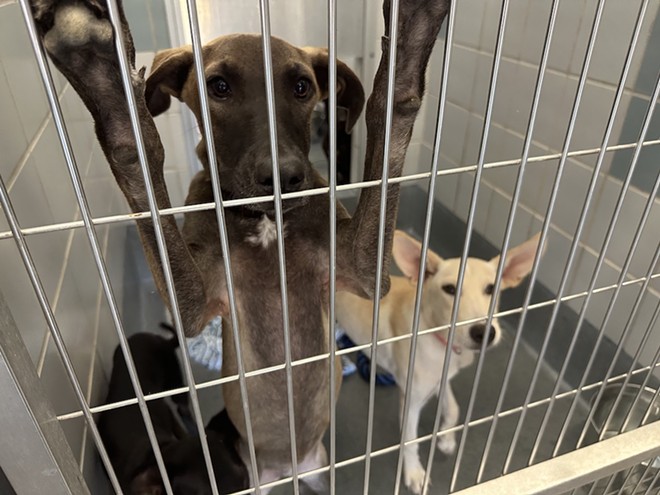
More money needed
On Friday afternoon, residents of the North Side's Mission Trace neighborhood called ACS about what they believed to be a rabid raccoon. Neighbors spotted the animal early that morning on a street where children reside. It walked circles with foam streaming from its mouth before eventually passing out on a resident's driveway.
The first call to ACS went out at around 10 a.m., according to neighbors. Although ACS officials told residents that the matter was marked as "urgent," it still took more than 6 hours for an animal control officer to arrive.
Sims told council that under the department's proposed budget increase, he'd like to see ACS be able to respond to 64% of calls by the end of next year and 100% by 2026.
"While I understand that that's part of a three-year plan, 64% is still a failing grade," McKee-Rodriguez, a former high school math teacher, told Sims. "And it assumes that the 50,000 critical calls [to ACS] will not grow over those three years — and that's concerning to me from a planning perspective."
After watching the meeting play out, Acosta was also concerned about ACS's proposed targets when it comes to spay-neuter programs. Those too will fall short of the city's needs, she argued.
"The spay and neutering that ACS wants to do for next year is 44,000," she said. "But, in order to make a real change, they would have to do 100,000 a year to even see a difference."
While Acosta said she welcomes the increased resources for ACS, the city should be digging deeper to correct what many agree is a pressing and long-ignored problem.
"This is the biggest [proposed] budget for ACS because we're in a crisis and an elderly man just died, but it's still not enough," Acosta said. "[The city] should have been giving them more money the whole time, but it took the crisis for one city council member to speak up and say something, finally. But it's still not going to be enough."
Subscribe to SA Current newsletters.
Follow us: Apple News | Google News | NewsBreak | Reddit | Instagram | Facebook | Twitter| Or sign up for our RSS Feed








